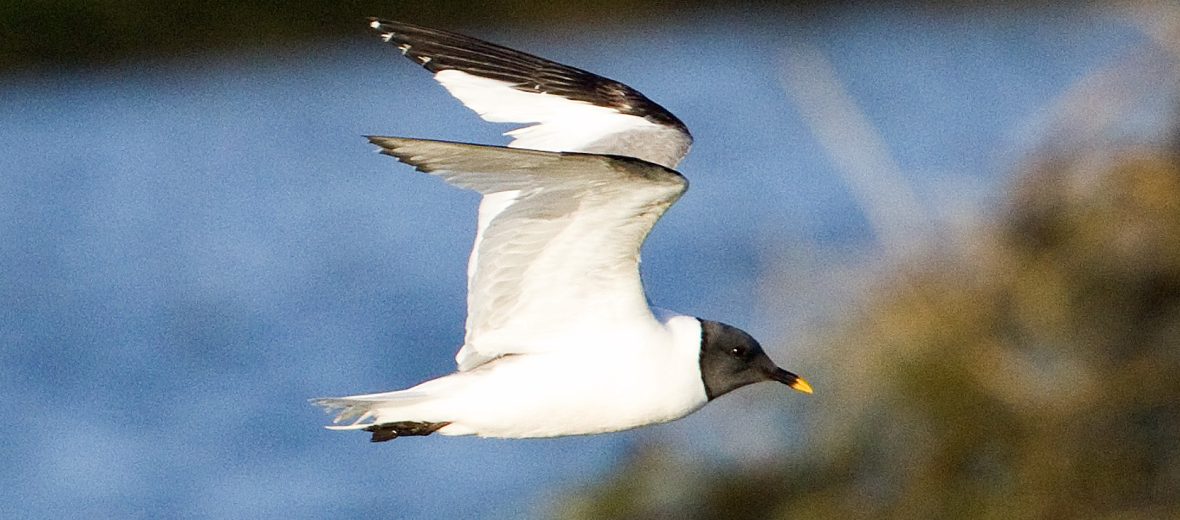
The Sabine’s gull, aka xeme or fork-tailed gull, can be found along the coastal regions of every continent, sans Australia and Antarctica. These birds prefer swamplands and moss covered areas with tidal marshes, numerous lakes, and shallow brackish (partially salty) water pools. They can also be found in the ocean. Even though they face the threats of hunting and trapping, as well as climate change, these birds are abundant with a stable, estimated population of about 340,000 wild individuals.
First the Stats…
Scientific name: Xema sabini
Weight: Up to 7 ounces
Length: Up to 13 inches
Wingspan: Up to 34.25 inches
Lifespan: Up to 18 years
Now on to the Facts!
1.) These birds are migratory and travel cross continent, as well as across oceans to get to and from their breeding grounds.
2.) Sabine’s gulls spend a great deal of their lives at sea.
3.) They tend to follow fishing boats and feast on discarded fish remains.
4.) Their call is a high-pitched, loud, almost squeaking sound.
5.) A group of gulls is called a screech, scavenging, flotilla, gullery, or squabble.
But wait, there’s more on the Sabine’s gull!
6.) While on land, they feed on insects, spiders, and smaller birds & their eggs. While sea faring, they will feast on fish and crustaceans.
7.) They can be seen nesting in pairs or in large gulleries.
Did you know…?
Their parents lead the chicks, early on, to nearby water so they may begin feeding themselves.
8.) Females lay up to 3 eggs that hatch in up to 25 days.
9.) The chicks are born precocial (self sufficient).
10.) Chicks leave the nest soon after hatching.
11.) Adults are preyed on, on land, by foxes, wolves, and birds of prey. At sea, they are sometimes preyed on by sharks. The eggs and chicks are preyed on by other sea birds and foxes.
Now a Short Sabine’s Gull Video!
Be sure to share & comment below! Also, check out the Critter Science YouTube channel. Videos added regularly!
Want to suggest a critter for me to write about? Let me know here.



